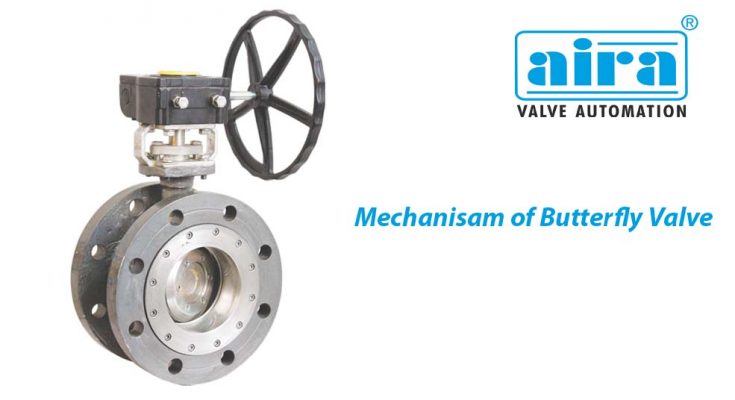Hello Everyone, In this article, we discuss the mechanism of Butterfly Valves. The High performance butterfly valves are members of the quarter turn valve family. Like a ball valve, butterfly valves are also used for quick action and throttling. Ideal for handling large amounts of liquids or gases. Flow control and throttling are common applications of butterfly valves due to their ease of use.
The Basics of Butterfly Valves
When compared to other types of valves, the butterfly valve is the most cost-effective and most economical. Butterfly valves utilize rotating metal discs around a stem to activate a tight shutoff on both sides of their resilient seat. The stem may be attached centrally or at an offset. The rubber seat is also protected by a packing component that provides an extra seal in the event of a fire. It only takes a quarter-turn of the handle to fully open this quarter-turn valve.
How to Operate Butterfly Valves?
Different methods of operation are available for the disc component. Various types of actuators perform it, including pneumatic actuators, electric motors, solenoids, and hydraulic pistons and cylinders.
Using a handwheel to operate butterfly valves
All you need to do is set the handwheel to the open or close position. Operating a butterfly valve by this method is the easiest and oldest technique. In other words, they don’t happen automatically. A manually operated valve can have a lever, a wheel, or a gear attached to its stem. Usually, these valves are employed in non-automatic systems.
Large plants such as refineries and power plants use high-performance butterfly valves with gearbox actuators and handwheel connections through their stems. A power-operated actuator is utilized to operate valves in an automatic manner. Valve switches allow the user to monitor the disc position remotely. Therefore, the handwheel in this type of system serves as an emergency mechanism when there is no electricity.
A Pneumatic Actuator is Used To Drive Butterfly Valves
The pneumatic actuator is powered by air or gas. Depending on its capabilities, it can be automatically or semi automatically operated. It has a simple design and is easy to operate.
- System parameters define a pressure range.
- When the system detects that it is about to exceed the air pressure, the diaphragm modulates the butterfly valve’s opening and closing amount.
- You can use pneumatic valves as throttle butterfly valves or for throttling.
An electric-operated butterfly valve has a limit switch for operation, while this type of valve uses the following for operation:
- Single Acting – The air pressure stimulates spring movement so that the stem moves.
- Double Acting – Two inlets of air are used to drive the valve from the close position to the open position
Butterfly Valve Materials
Butterfly valves are available in a variety of body, disc, and seat materials designed for different applications. Aluminum valves are appropriate for lightweight applications, stainless steel butterfly valves for mediums with corrosive properties, carbon steel (WCB high-performance butterfly valves) for high-temperature and strength applications, and austenitic steel valves for cryogenic applications.
You can either have a metal seat or a resilient seat. It is easy to distinguish the differences between them based on their structure. As opposed to resilient seated valves, metal seated valves have metal-to-metal contact points and no elastomer or Teflon seating.
Additionally, each valve has different temperatures, pressures, and sealing capabilities. In terms of sealing, metal seated valves are not as good as resilient seated valves due to their hardness and ability to withstand high temperatures. On the other hand, resilient seated valves may not withstand high temperatures.
In the end,
It is very simple to operate butterfly valves. For it to work, you don’t need a lot of technical knowledge. They are most important when they are made to perform fluid regulation, throttle, and control accurately and safely. Visit our website to learn more about our range of high-quality, high-performance butterfly valves.
